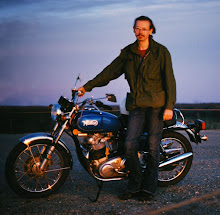Jim Kunstler's dark visions for America include some pretty hefty hammering on the evolution of American cities. My friend Roger has recently posted a great blog about how the city of Savannah, Georgia is laid out, comparing it favorably to most plains towns and giving a good summary of what has happened. Here's my take.
Our cities had vast spaces surrounding them so expansion was an easy option. The explosion in automobile use allowed everyone the chance to work in the city and live in their own single-family home in countrified suburbia - the American version of English "country gentlefolk". When I was a boy in the Chicago 'burbs, my father rode a commuter train to work downtown. That train's business was usurped in the 60s by the development of expressways out to the 'burbs and the commuter lines went out of business. They ripped out the tracks in the 70s and made the right-of-way through town into a bike and walking path, which it remains to this day. Cheap oil powered the automobiles that enabled the expansion of the suburbs even as public intracity transport declined.
My life in that town as a youth was something like what Roger describes - we walked or rode bikes most everywhere we needed (although even then the car had become a convenient option to expand our horizon). My grade school was less than a block away from my home. Strip malls were just beginning - our 'central business district' was easily accessible to most people in town and had locally-owned businesses for the most part, not chains. The chains came in as I was growing up and forced out most of the locally-owned competition. The shift toward sprawl began as development of outlying parts of town made some things accessible only by car. I could walk to my high school, but it was nearly an hour's walk, so we rode a school bus and my father would drive me when the bus wasn't available (I didn't have my own car until I was in graduate school).
Chicago was accessible by bus so my high school friend and I could safely take the bus downtown, spend the day going to museums, enjoy a nice lunch in a restaurant, see a movie, walk along the lakeshore, and return home safely that evening - all before we were 16. Imagine letting your kids do that today!
Having traveled in Europe, I've seen they don't sprawl so much. Most people living outside the city park on the outskirts and walk in. Even relatively large cities are compact and many of the things you'd want to see and do are within walking distance. Most people don't live in individual houses, living instead in what we would call apartments, often located above city storefronts. The cities sprawl upward, not outward. There's frequent, affordable, comprehensive public transportation, including intercity as well as intracity transport. We have nothing like that anymore - whatever passenger train and bus lines existed in our past are mostly long gone, replaced by inefficient, gas-guzzling road vehicles and aircraft.
The time when we could afford this system is passing, quickly, hastened by the demise of cheap oil. Any sustainable system must look more like Savannah than Atlanta.
The Incoming System
6 hours ago

